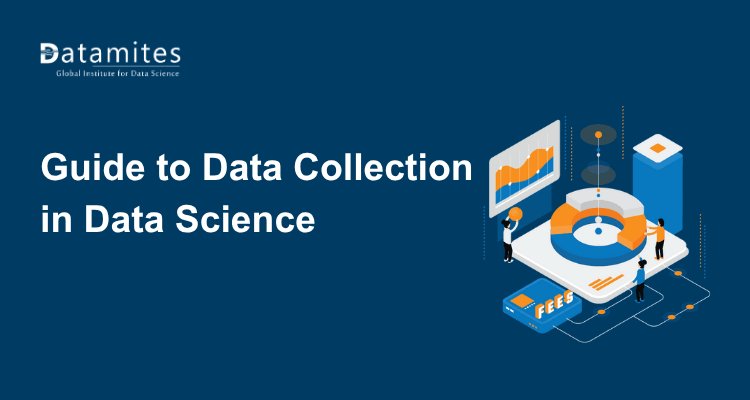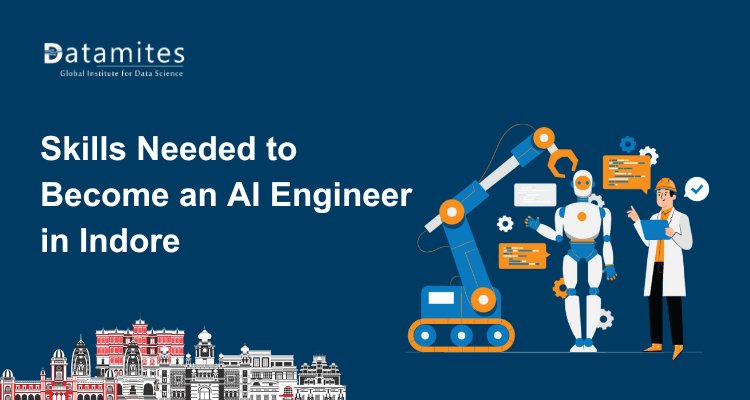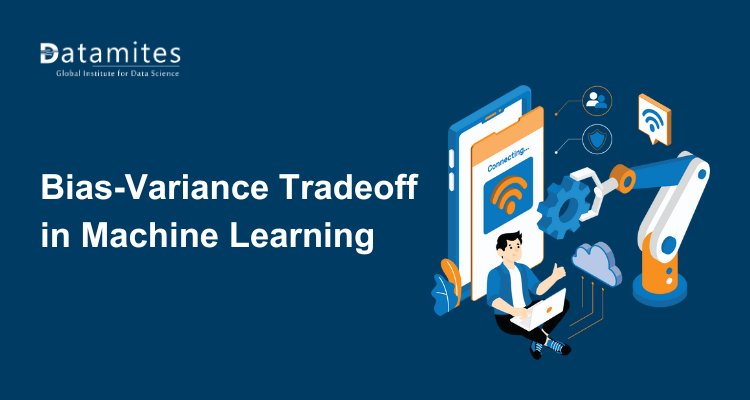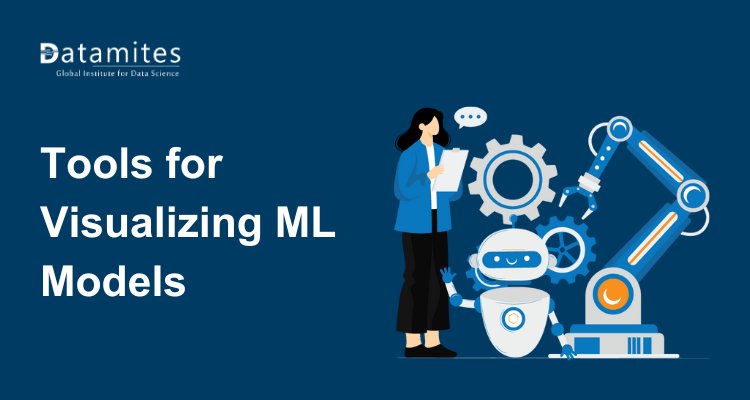Beginner’s Guide to Data Collection in Data Science
Discover the essentials of data collection in data science with this beginner’s guide. Learn about various data sources, methods, and best practices to gather accurate and relevant data. Perfect for newcomers, this guide helps you build a strong foundation for successful data analysis and insights.

Every data-driven decision starts with one thing: data. In data science, collecting the right data is like planting the right seeds before expecting a healthy crop. Even the most advanced machine learning model or the best visualization skills cannot make up for incomplete, irrelevant, or inaccurate data.
If you are new to data science, learning how to collect data effectively is one of the first and most important skills you should master. In this guide, we will break down everything you need to know—in simple, beginner-friendly terms—so you can collect data with confidence and integrity.
Understanding the Role of Data Collection in the Data Science Process
Before diving in, let’s understand where data collection fits in the bigger picture. The typical data science process looks like this:
- Define the problem
- Collect data
- Clean and preprocess the data
- Analyze and model the data
- Visualize results and share insights
If step two—data collection—is weak, the rest of the process is built on shaky ground. Imagine building a house with a poor foundation; no matter how good the design, it will not stand.
The market reflects the growing importance of this step. In 2024, the data collection software market was valued at approximately USD 2.95 billion and is projected to reach around USD 5.32 billion by 2033, growing at a CAGR of 6.78%. (Source: Global Growth Insights).
Refer to these articles:
- What Is Regression Analysis in Data Science
- Does Data Science Require Coding
- Data Cleaning in Data Science
Common myths beginners believe:
- “More data is always better.” In reality, quality matters more than quantity.
- “I can just find the perfect dataset online.” Often, you will need to create or refine it yourself.
- “Data collection is just downloading files.” It can also involve surveys, APIs, web scraping, and sensors.
Types of Data in Data Science
Not all data is the same, and understanding the different types helps you choose the best way to collect it.
- Structured Data – Structured in a grid format with rows and columns, similar to spreadsheets or SQL databases.
- Unstructured Data – No fixed format. Example: social media posts, videos, audio files.
- Quantitative Data – Numbers and measurable values. Example: revenue, temperature, age.
- Qualitative Data – Descriptive, non-numerical information. Example: customer feedback, interview transcripts.
- Primary Data – Data you collect yourself. Example: a survey you create for a project.
- Secondary Data – Data collected by others that you use. Example: datasets from Kaggle or government portals.
In fact, image and video data are now the fastest-growing segments in the data collection industry, driven by the rise of AI, IoT, and computer vision applications.
Common Data Sources for Beginners
The good news is that you don’t need expensive tools to get started. Some beginner-friendly options include:
- Public Datasets – Platforms such as Kaggle, the UCI Machine Learning Repository, and official government data portals like data.gov.
- APIs – Services like the Twitter API, OpenWeather API, or Google Maps API provide real-time, structured data.
- Web Scraping – Collecting data from websites using Python tools like BeautifulSoup or Scrapy.
- Sensor & IoT Data – Smart devices, GPS trackers, and wearables.
- Internal Company Databases – CRM or ERP systems, if you work for an organization.
A Forbes survey found that 67% of organizations struggle with integrating data from multiple sources, making data collection strategy a competitive advantage.
Refer to these articles:
- Hypothesis Testing in Data Science Explained
- Mastering Data Wrangling in Data Science
- Ethical Challenges in Data Science 2025
Data Collection Methods and Tools You Should Know
When it comes to data collection methods, you can choose based on your project needs:
Surveys & Questionnaires: Create your own datasets using tools like Google Forms or Typeform.
Observation & Manual Recording: Useful for small, specific projects (e.g., counting cars in a parking lot).
Web Scraping: Extracting data from web pages using Python libraries like BeautifulSoup or Selenium.
APIs: Making HTTP requests to fetch structured data.
Automated Logging: Tracking user activity or sensor data automatically.
Beginner-friendly tools:
- Google Forms (surveys)
- Excel or Google Sheets (manual data entry)
- Python libraries (Pandas, Requests, BeautifulSoup)
- SQL for database queries
With the growing demand for automation, McKinsey predicts that 60% of data collection processes will be fully automated by 2030, making these tools vital for any aspiring data scientist.
Refer to these articles:
- How to Become a Data Scientist in Mumbai?
- Data Science Course Fees in Mumbai
- Data Science vs Data Analytics: Which Field is Thriving in Mumbai?
The Importance of Data Quality and Accuracy
Big data holds little value if it’s inaccurate, inconsistent, or incomplete. Data scientists often refer to the 4Vs of Big Data:
- Volume – Amount of data collected
- Variety – Different types and formats of data
- Velocity – Speed of data generation and processing
- Veracity – Reliability and trustworthiness of data
A recent TechRadar article warned that many AI and machine learning projects fail due to poor-quality data, even when the algorithms are well-designed. Strong data collection and governance form the backbone of effective AI.
Beginner tips for better quality:
- Verify your sources
- Remove duplicates and irrelevant entries
- Use consistent data formats
Ethics and Legal Considerations in Data Collection
Ethical data collection is essential in today’s environment. Improper handling of data can result in legal issues and damage to trust.
- Respect Privacy – Always get consent before collecting personal data.
- Follow Data Protection Laws – Be aware of GDPR, CCPA, and similar regulations.
- Avoid Bias – Keep surveys and collection methods neutral.
Falling survey participation rates some official reports have dropped below 70%—show how easily trust can be lost when people feel their data may be misused.
Beginner-Friendly Tips for Effective Data Collection
If you want to make your data collection process efficient:
- Start small before moving to large datasets.
- Document every source and method.
- Automate repetitive tasks with scripts.
- Always back up your data to cloud or external storage.
India’s data center sector is expected to draw investments of USD 20–25 billion by 2030, with its capacity anticipated to reach around 4,500 MW. This expansion highlights the growing need for organized, well-stored, and accessible data.
Refer to these articles:
- How to Become a Data Scientist in Nagpur?
- How much are the data science course fees in Nagpur?
- Is Data Science Still in High Demand in Nagpur?
Real-World Example of Data Collection in Action
Let’s say you want to predict house prices in your city. Here’s how the process might look:
- Define your goal – Estimate home values using factors such as property size, location, and available amenities.
- Choose your data sources – Kaggle datasets, government housing records, and real estate APIs.
- Collect the data – Download, scrape, and use API calls.
- Check quality – Remove duplicates and fix missing values.
This mirrors professional workflows and gives you a solid foundation for analysis.
Data collection may not be as flashy as building models, but it is the foundation of every great data science project. This skill’s growing importance is evident in the numbers, with the global data collection market valued at USD 1.87 billion in 2023 and expected to surge to USD 11.77 billion by 2030, registering an impressive CAGR of 30.1%. (Source: Grand View Research).
Start small. Download a free dataset, explore its structure, and try collecting your own data. Every great data scientist begins here, and your journey from beginner to professional starts with mastering this step.
If you are exploring ways to take your first real step into the world of data science, choosing the right learning path can make a big difference. Cities like Ahmedabad, Bangalore, Chennai, Pune, Coimbatore, Mumbai, and Nagpur have become active hubs for data science education, offering opportunities to gain both theoretical and practical expertise. For those looking to upskill, enrolling in a data science course in Mumbai is an excellent choice, given the city’s growing tech ecosystem and industry connections. According to a 2024 NASSCOM report, India’s data science market is expected to reach USD 16 billion by 2026, with a growing need for professionals who can work on real-world problems from fraud detection to algorithmic trading.
DataMites is a renowned institute for data science education, known for delivering industry-focused courses that emphasize practical, hands-on experience. At DataMites, we understand the importance of bridging the gap between learning and application. Our Certified Data Scientist Course, accredited by IABAC and NASSCOM FutureSkills, are designed to give learners exposure to essential tools, machine learning workflows, and advanced analytics. Through live projects and internships, students can gain experience that mirrors the demands of the industry.
For those who prefer face-to-face learning, we offer classroom-based data science courses in Mumbai, Bangalore, Pune, Chennai, Hyderabad, Ahmedabad, and Coimbatore. If you’re looking for flexibility, our online learning options make it possible to access quality training from anywhere, including for those searching for a data science course in Nagpur. This approach ensures that no matter where you are, you can gain the skills and confidence to start or advance your career in this fast-growing field.





